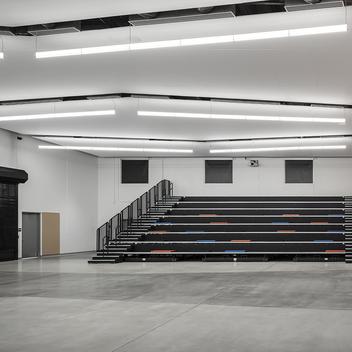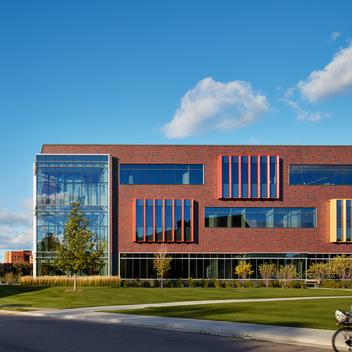Double Tees are a great quality structural product to consider when compared to other members in other types of construction. In this episode, Professional Engineer, Phil Thomas, covers helpful information on designing with precast Double Tees.
The main topics covered include:
- Double Tee efficiency and prestressing basics
- Design of Double Tees for external loads and manufacturing considerations
- Preliminary selection of Double Tees for your structure
Precast double tee efficiency and prestressing basics.
Double Tees are a great example of the material efficiency of precast concrete. For example, the geometry of a standard 24" deep Double Tee section allows for spans up to about 60’ while requiring the same amount of concrete and reinforcing that you would see in a 4" thick solid flat slab that can only span up to 10,’ spanning over 80% more distance. The Double Tee is pre-manufactured in an off-site manufacturing facility where prestressing tendons are pre-tensioned and then released into the member to counteract the stresses created when the member is under load. The forms in these facilities utilize steel rails and intensive quality control, creating an environment that ensures a high-quality product.
Designing with double tees for external loads and manufacturing considerations.
Double Tees support any combination of floor loads. These members have a minimum release strength of 3500psi and a final strength of about 5000psi. The major design components are the selection of flexural reinforcement consisting of prestressing strands and shear reinforcement at the end of the member. Shear reinforcement typically consists of wire mesh or rebar stirrups. The deck itself is also reinforced with mesh or transverse rebar. The Double Tees can be produced with a top deck that is prepared with a roughened surface to receive a post pour topping, or "pretopped", requiring no additional topping once the member is cast. The end bearing generally requires the use of an internal bearing plate or dap reinforcement when a notch is required at the bearing location.
Double Tees are typically manufactured in steel forms that can be anywhere from 100 to 600 feet in length. They can be produced in a variety of depths and widths that vary widely among manufacturers. Lifting devices are cast into the members so that can be stripped from their forms and handled easily until they are placed into their final positions within the structure. Transportation constraints such as weight and overall length should be considered early in the project timeline to avoid any issues later.
Preliminary selection of Double Tees for your structure.
Double Tees can be used in many types of structures. They can be supported by masonry walls or steel or any other common construction material. While this video focuses on Double Tees as floor members, they are very versatile and can function in various other ways, such as wall panels or bridge sections. There are a variety of depths manufacturers can provide for you to choose from. The actual geometry of the final members will vary slightly from what you see in the span tables, but this is insignificant for the overall selection process.
As an Architect or Engineer of Record, it is crucial to understand the resources that exist to help you pre-select Double Tees for your structure. The latest edition of the PCI manual provides span tables to help you choose which member is appropriate for your building given its loading and required span length. Wells Design Handbook also includes specifications and details planning tools.
Additional Double Tee Resources:
Find these resources in our Design Handbook:
- Precast Double Tee Specifications
- Double Tee Bearing Details
Don't be shy about reaching out to Wells or your local supplier to find out if precast is the right solution for your project.



